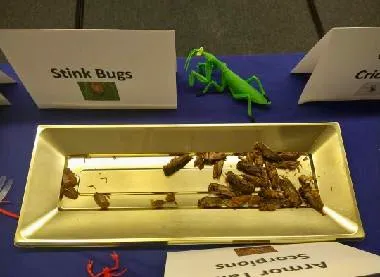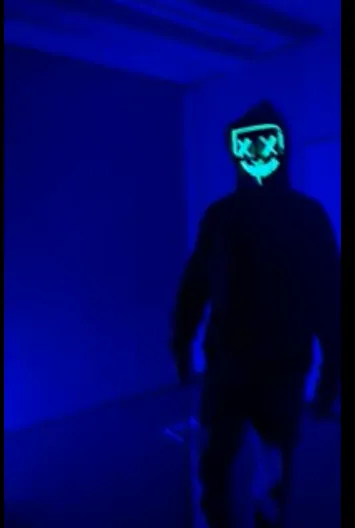From bake sales to talent shows, educators and students across the nation spend many hours each year developing and executing fundraisers to pay for much-needed programs, enriching activities and support for local charities.
Yes, the tried-and-true car wash and wrapping paper sales can bring in extra money. But what if a school could create a hugely successful fundraiser that also resulted in schoolwide engagement and learning experiences for students?
That's what these three schools did recently to boost school spirit and bring innovation to traditional school fundraising approaches.

Sleeping on the school roof
The roof of the one-story Central Academy in Middletown, Ohio, can be lonely and cold in the middle of the night, but that's where Principal Stephen Sippel had volunteered to sleep under a tent on Oct. 17, when temperatures hovered around 40 degrees and he had "the worst night's sleep ever."
Yet as students arrived at the K-6 school the next morning and he waved from the roof, seeing excitement on the faces of students and teachers made the campout worth it.
The principal's sleepover on the roof was part of a school fundraiser that also included an all-school walk-a-thon. The school wanted to raise $10,000 so it could adopt a "facility" dog, trained to specifically work in schools as a therapy companion.
Sippel said a dog could bring joy to the school's 360 students, half of whom qualify for free and reduced- price meals and some of whom had experienced trauma or anxiety. Sippel had promised that if they met the $10,000 goal, he would sleep on the roof.
But the walk-a-thon only brought in $9,300. As Sippel announced the disappointing result to a roomful of students, Middleton City School District Superintendent Deborah Houser, who attended the announcement, said the district would contribute the remaining $700 so the school could adopt the dog.
Since the school had now met its goal, Sippel would indeed be sleeping on the roof.
Tucker, the dog assigned to the school, should arrive in January. There will be a five-month trial period to see if the dog and school are a good fit. If they are, the school will pay the $10,000 fee and officially adopt the dog. A teacher will care for Tucker on nights and weekends but during the school day, his crate will be in Sippel's office.
The fundraiser was successful, Sippel said, because students, staff and families supported the goal of adopting a dog for the campus. Most importantly, he said, the walk-a-thon generated a lot of school spirit and a great deal of joy in working toward the fundraising goal.
"There is a lot of power in your community that many times, especially in poorer communities, we dismiss and we lower our expectations for what we can possibly raise, or we can do," Sippel said. "I think my tiny school is evidence that you can do great things when the community comes together."
Eating a scorpion and other critters
A cooked scorpion tastes like a salty, crunchy potato chip, according to Whitehaven Elementary STEM Principal Tommy Elliott, who, until he ate the insect in front of students and staff on Oct. 23 at the Memphis, Tennessee school, had never tried a scorpion before.
But he has previously eaten other bugs like grasshoppers during an annual schoolwide event to celebrate World Edible Insect Day. The gathering is held to mark the end of the K-5 school's first-quarter study of entomology.
It's also a fundraising event where students pay $2 to watch their principal eat a bug that they've chosen through a schoolwide survey. Staff members new to the school also are invited to eat bugs — but students do not partake.

This year's buzz-worthy event raised about $680, which the 480-student school donated to Clean Memphis, a partner organization of the school that provides hands-on environmental experiences for youth.
There's another benefit to the bug buffet: Attendance rose that day, and students and staff felt a fun energy leading up to the event, said Elliott, who is in his 13th year as principal of Whitehaven Elementary STEM.
School should be a place where kids like to be, Elliott said. "So when they like being somewhere, you're going to get their best."
And the study of bugs is a big draw for his students. This year, the students pondered the question, How can eating bugs benefit human society? They conducted research and talked about nutrition, protein and hunger. One student suggested that if humans ate more crickets, there would be more water left for humans to drink because crickets need less water to survive than other animals like cows.
"STEM is about them being able to critically think, use their creativity and then be able to communicate with each other and collaborate with each other," Elliott said.
Converting a school into a haunted house
Some people think their schools are haunted, while others go to great lengths to make them appear haunted.
That's exactly what Idaho's Kellogg High School's student council members, drama students and Adam Ream — the student council advisor and drama teacher — did by converting a former middle school into a walk-through, immersive haunted house.

The students developed the fundraising idea because they wanted a fun, safe Halloween activity for teenagers and adults, but they also wanted to raise enough funds to support activities like homecoming and other school spirit events throughout the year.
Operating for the second year, the KHS Haunted House, was held on Oct. 28 and featured student actors playing zombies, clowns at a haunted carnival and porcelain dolls with Victorian clothes. There was also a sacrificial area with screaming people in cages. A white strobe light disoriented guests, as did frequent high-pitch screaming.
The last room of the haunted house was completely dark and had hanging fishing lines to make people feel like they were walking through cobwebs, said Ream. "It's very scary."
Many people were eager to be frightened. Although the school only has 280 students in grades 9-12, this year's haunted house drew more than 500 guests, Ream said.
By charging $5 each, the school raised $3,000. A local dental office covered the upfront costs with a $1,000 sponsorship, so the student council could keep 100% of the profits, Ream said.
In total about 40-50 students participated as organizers and actors, giving them experience planning a major event. Additionally, the city of Kellogg coordinated its Halloween festival with the KHS Haunted House and provided shuttles taking people between both events, Ream said.
"Everyone who came out, loved it. We had more people this year than last year so I think it's just going to keep getting bigger and better," Ream said.












